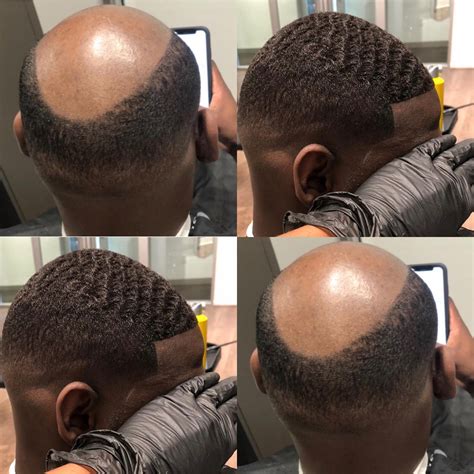Introduction
Hair weaving for men has emerged as a popular solution to hair loss and thinning, offering versatility and natural-looking results. This comprehensive guide explores the different types, styles, pain points, and benefits of hair weaving for men, empowering you to make informed decisions about your hair care journey.

Types of Hair Weaves for Men
- Hair Extensions: Attached to existing hair using clips or glue, providing instant volume and length.
- Lace Wigs: Full or partial coverings made of lace, with individual hairs knotted into the fabric.
- Toupees: Small pieces that cover a specific area of hair loss, such as the crown or temples.
- Micro-Bonding: Tiny metal rings are used to attach individual hair strands to existing hair.
- Fusion Bonding: Similar to micro-bonding, but uses heat to create a stronger hold.
Styles of Hair Weaving for Men
- Short and Natural: Blends seamlessly with existing hair for a subtle enhancement.
- Long and Voluminous: Creates a dramatic effect with added length and fullness.
- Fades and Tapers: Gradually transitions from shorter hair at the bottom to longer hair at the top.
Pain Points of Hair Weaving for Men
- Cost: Can be expensive, depending on the type and style chosen.
- Maintenance: Requires regular brushing, combing, and washing to maintain its appearance.
Benefits of Hair Weaving for Men
- Boosts Confidence: Enhances self-esteem by improving hair thickness and coverage.
- Provides Versatility: Offers numerous styling options, from sleek to messy.
- Non-Surgical Solution: Unlike hair transplants, hair weaving is a non-invasive procedure.
- Protects Natural Hair: Can serve as a barrier, protecting existing hair from damage.
- Enhances Style: Complements beards, mustaches, and other facial hair styles.
Comparison of Hair Weaving Methods
| Method | Pros | Cons |
|---|---|---|
| Hair Extensions | Clip-in convenience, instant results | May damage natural hair, short lifespan |
| Lace Wigs | Realistic appearance, full coverage | Requires daily styling, can be uncomfortable |
| Toupees | Targeted coverage, easy to wear | May be noticeable, limited styling options |
| Micro-Bonding | Natural-looking, long-lasting | Time-consuming to apply, can be painful to remove |
| Fusion Bonding | Strong hold, durable | Requires heat, can cause scalp irritation |
Motivations for Hair Weaving for Men
- Desire to improve hair thickness and coverage
- Concealment of hair loss or thinning
- Experimentation with new hairstyles
- Protection of natural hair from damaging elements
Why Hair Weaving Matters for Men
- Improves mental and emotional well-being by boosting confidence
- Enhances personal style and self-expression
- Provides a cost-effective and versatile hair solution
- Protects natural hair from damage and environmental factors
Future of Hair Weaving for Men
“Scalp Weaving” is a potential future innovation in hair weaving for men. This involves weaving hair strands directly into the scalp, creating a virtually undetectable and permanent hair covering.
Tables
Table 1: Average Cost of Hair Weaving for Men
| Method | Average Cost |
|---|---|
| Hair Extensions | $100-$500 |
| Lace Wigs | $500-$1500 |
| Toupees | $200-$800 |
| Micro-Bonding | $500-$1500 |
| Fusion Bonding | $600-$2000 |
Table 2: Estimated Maintenance Time for Hair Weaving
| Method | Maintenance Time |
|---|---|
| Hair Extensions | Daily brushing, occasional washing |
| Lace Wigs | Daily brushing, styling, weekly washing |
| Toupees | Weekly brushing, monthly maintenance |
| Micro-Bonding | Monthly brushing, bi-monthly tightening |
| Fusion Bonding | Monthly brushing, quarterly maintenance |
Table 3: Potential Pain Levels During Hair Weaving Removal
| Method | Pain Level |
|---|---|
| Hair Extensions | Minimal |
| Lace Wigs | Moderate |
| Toupees | Minimal |
| Micro-Bonding | Moderate to severe |
| Fusion Bonding | Severe |
Table 4: Comparison of Pain Points and Benefits of Hair Weaving
| Pain Points | Benefits |
|---|---|
| Cost | Boosts Confidence |
| Maintenance | Provides Versatility |
